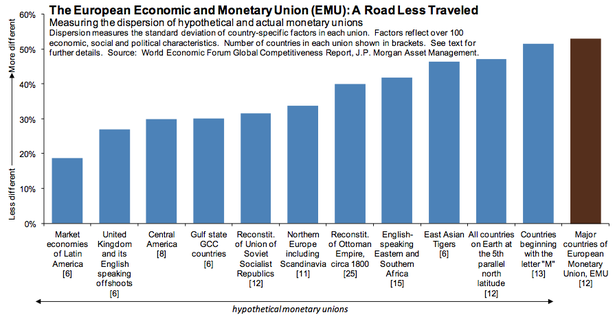According to astronauts on board the ISS, the interior of the SpaceX capsule has a “new car smell“. Seeing the world’s first commercial spacecraft dock with the ISS successfully is, well, awesome I think is an appropriate word here.
I just wrote an e-mail addressed to all Conservative members of Parliament:
Members of Parliament, Honorable Ministers, Right Honorable Prime Minister:
You are about to vote into law a Bill, C-11, that will declare me a criminal (a criminal!) were I to insert a DVD, legitimately purchased in my native Hungary, into my North American computer and watch it using appropriate software, as said software necessarily breaks a digital lock, namely the region code.
Here is my question: Why are you doing this to us Canadians?
In what Orwellian universe does this serve the interests of our country? Or even, for that matter, those of the Walt Disney Corporation?
Sincerely,
Viktor T. Toth <address and telephone number provided>
PS: I am a former Conservative voter. I am not a political activist (nor am I a “radical extremist”, Mr. Moore), and this desperate last-minute attempt to persuade you is done on my own initiative. Please, do not disrespect me by responding with a stock answer that is just generic propaganda in favor of Bill C-11. While I am quite prepared to receive no answer at all, if you do choose to reply, please address my question directly. Thank you.
Needless to say, I don’t actually expect this e-mail to change anything.
The Dragon capsule of SpaceX Corporation is on its way after a successful launch towards the International Space Station. If all goes well, it will dock with the ISS in two days’ time, making it the first commercial spacecraft to do so, and paving the way to eventual human flight to the ISS on board commercial vehicles. This really is the beginning of a new era.
And the end of an old one. The ashes of James Doohan, better known as Scotty to Star Trek fans, are reportedly on board the Dragon capsule, to fulfil the actor’s final wishes.
I just read (link in Hungarian) that a far right member of the Hungarian parliament found it necessary to use a genetic test to prove that he is free of Jewish and Roma blood.
Even if it were possible to do so, I have no inclination to use a genetic testing service to find out the ethnicity of my ancestors. But, I do hope that I have Roma, Jewish, Hungarian, Slav, Russian, German, or for that matter Chinese or Indian ancestors. That is because there is only one group of people that I wish to belong to: the group of human beings. I have zero desire to join any subgroup whose sole purpose is to revel in the idea that they are somehow superior by birth to other subgroups. And, well, if all this makes me a mongrel or a tyke in the eyes of some with a better defined ethnicity… you know what, I don’t really like your purebred attitude either.
Remember Microsoft Bob? The revolutionary new interface for Windows that was supposed to make everyday computing easier for the unwashed masses?
It was one of Microsoft’s most spectacular product failures, surpassing even the dreadful Clippy (which, after all, was just an unwelcome feature in an otherwise successful product, Office 97).
But now, it seems that Microsoft is determined to do it again. At a time when the operating system is becoming increasingly less relevant to most users (who cares what operating system runs underneath your browser when you access Gmail or Office 365?) they seem to be dead set on alienating that one class of users for whom the operating system still matters: content creators, which includes artists, designers, software developers and the like.
To their credit, Microsoft is doing this in the open, documenting in a very lengthy blog post the basic ideas behind their most controversial design choices.
But the comments are revealing. Here is a random selection (certainly not unbiased) that I found that I could most closely relate to. After all, just like one of the commenters, I, too, “tried Windows 8 for 2 weeks and then uninstalled“… or rather, not so much uninstalled as never looked at the VM again in which it was installed because I just couldn’t care.
So here are those comments:
“Can someone help me out? Should I install Ubuntu, get a Mac, or keep using Windows 7?”
“Your product is named after a feature of your product. And now the new version of your product tries to abandon said feature in its newly introduced usage mode.”
“Google just added windows to Chrome OS. You are removing windows from Windows. This won’t end well.”
“Except for immersive games, I DON’T WANT to run a single full-screen app. Not ever. If I want something to fill the screen, I will maximize the windows.”
“There is a significant disjunction in the UI. when you hit the start button and are whisked into metro land just to search for something, only to come back to the desktop”
“Thank you Microsoft for this complete failure. I for one welcome our new KDE overlords!”
“None of this TABLET CRAP belongs on desktops!”
“The cold, hard truth of the matter is that Microsoft have created an operating system that I feel is OPENLY ANTAGONISTIC to power users, business users, creative professionals and anyone seeking to use their PC as a productivity tool.”
“In WW2 the English started a program to analyze aircraft to figure out where they needed to add armor. They looked at all of the planes coming back and did frequency analysis of where the bullet holes were. Some areas were so riddled that easily 60% of bullet holes hit these key areas. The first reaction is to armor these heavily hit areas of the plane. This is wrong. These planes survived. The armor should go everywhere else.”
“You are killing Aero? You have to be kidding!”
“Windows 8 prognosis for sales: not that good. That is the latest finding from research entity Gartner.”
“I have to give you credit Microsoft, you really do know how to alienate people.”
“The flat UI in no way looks premium. It is harsh, spartan, and an eyesore.”
“The Metro environment severely compromises functionality by:
- not allowing real multitasking (only applications in the foreground are allowed to use CPU);
- not allowing more than two applications to run in the foreground (all other applications are suspended).
- not allowing the two apps in foreground to use half the screen each (most of the time one of the two apps will be unusable because it has too little space to display information).
- not allowing the use of more than one display for Metro apps.
- not allowing more than one running instance for an Metro app.“
“And the most scary thing is that we already have an example of crippling the Desktop: Windows on ARM/Windows RT. By not allowing third party Desktop applications, the Desktop is only there to allow you to use MS Office.”
“Do you have a logical explanation why you are screaming permanently that these 9.1 percent iPad/iPhone/Android users are more important than 90% desktop users?”
“Pls provide a METRO ON/OFF option in Windows 8 (only desktop). With Mouse&Keyboard, METRO is bizarre to use.”
“How does Windows 8 “metro” and other this teletubby nonsense work on multimonitor setup?”
“It’s a degradation of Windows. New UI is terrible”
“The metro interface is horrible and whoever designed it should go back to work for whatever cell phone company they crawled out of. Lets stop dumbing down the computer for the appliance user.”
“From my perspective, Aero glass is still fresh and new. The loss is ultimately cosmetic and therefore minor, but it adds to one of the bigger issues with Windows 8’s UI”
“Using Windows 8 with a mouse is about as much fun as running Windows Phone 7 in an emulator all day.”
And finally, the last comment that sums up my own feelings neatly:
“If W8 really works on a desktop used by adults I’ll consider it”
But not until then.
Courtesy of a Google+ friend, I stumbled across this graph, originally from The Atlantic:
What this graph demonstrates is quite simple. Take any random collection of nations. Former member states of the Soviet Union. All the countries along the 5th parallel. Members of a reconstituted Ottoman Empire. Or even countries beginning with the letter “M”. In all cases, the countries you pick turn out to be socioeconomically less diverse (i.e., they have more in common) than the major member states of the European Monetary Union.
I don’t know if it really makes the Eurozone doomed, but it certainly shows that holding it together will be quite a challenge.
“This is it. The Big Bang Theory television show lost all its credibility for me. I could put up with the laugh track (though I cannot understand why they need a laugh track for a realistic drama series) but not with this utter contempt towards elementary logic. Here is what happened: in one episode (S1E15), Dr. Sheldon Cooper tells us that Missy is his fraternal twin sister. But then, in another episode (S3E17), Dr. Cooper purportedly says, “I have a twin sister whose assaults began in utero. If only I’d had the presence of mind to reabsorb her then I’d have a mole with hair on it”. But a real-life Dr. Sheldon Cooper would never make such a mistake: he would know very well that one can only reabsorb an identical twin. This blatant disregard for logic is an insult to the viewers’ intelligence. I am sorry, but this show is unwatchable. Change the channel, please.”
The preceding rant is best delivered, of course, in the voice of Dr. Sheldon Cooper. Fortunately, I am not Sheldon Cooper, and I will still enjoy TBBT when it returns for its next season in the fall. Nor do I have any plans of joining the ranks of nitpickers who demonstrate their presumed intellectual superiority by spending hours watching and re-watching television shows and movies just to find the odd goof. I swear I only noticed this one by accident!
I am really disappointed to learn this morning that the world will not come to an end December this year. According to a new discovery, the Mayan calendar may have had at least 17 baktuns, not 13 as previously believed, so we are good for something like another two millennia.
Just as I was getting ready to sell my house and all my earthly possessions…
My humble request to Messrs. Ray and Mulcair today: stop wasting time and unite the left already!
One bright sunny day, the Conservatives try to pull the wool over Parliament’s (and the public’s) eyes by intentionally misleading us about the price of the planned F-35 purchase.
Another day, they are about to make Bill C-11 into law, turning me into a criminal (a criminal!) for the mere act of copying the contents of an (owned) DVD to my hard drive or watching a foreign DVD with the help of software that bypasses the region code.
Yet another day, they cut funding to science, potentially destroying unique national treasures.
Meanwhile, they award a teeny weeny contract for, what was it, transmission parts I believe… so tiny, it didn’t even deserve a press release, unlike much larger contracts worth thousands of dollars. The value of the teeny weeny one? $105 million.
Or how about slashing funding to Parks Canada so much, they may not even be able to keep canal locks open for a full season.
Then there is a totally unnecessary, boneheadedly ideological crime bill, implementing a “tough on crime” agenda at a time when crime rates are on the decline across the board. Who cares so long as the provinces foot the bill, I guess.
But never mind getting tough on crime, it does not prevent the Conservatives from closing the historic Kingston penitentiary… even though similar establishments are overcrowded everywhere (and that was before the new crime bill).
All this from a government that willfully ignores facts when they disagree with their agenda, or invents facts when it suits their fancy.
And they don’t even have a majority of Canadians supporting them. The only reason they enjoy a majority in Parliament is that the left cannot stop the bickering, and the Liberals and the NDP split the anti-Conservative vote.
Messrs. Ray and Mulcair: you are bigger than this. You know that Canada needs a better government in 2015. Unite already. I say this as a one-time supporter of the once proud Progressive Conservative Party of Canada: we need you.
Here is a photograph of the cockpit of the Space Shuttle Endeavour, powered up for the very last time ever:
It is an emotional moment. But we must not let those emotions get in the way of reason. The Shuttle program swallowed up huge amounts of money and these orbiters, however wonderful, didn’t really take humanity anywhere.
Just consider: the Shuttle flew a few hundred kilometers from the surface of planet Earth. That is one one-thousandths (!) of the distance to the Moon, visited by Apollo astronauts over 40 years ago. But no human has been beyond Low Earth Orbit (LEO) since Apollo 17 flew in late 1972. Now if all goes well, in a few short years one of the very first missions of NASA’s new spacecraft, the Orion capsule, may take humans beyond the Moon, to the L2 Lagrange point. At last, this is real exploration again… not just a routine (albeit dangerous) taxiing between the surface and LEO.
And the taxiing is not going to stop for Americans. The Dragon capsule of SpaceX corporation is set to fly to the International Space Station next week. It is still an unmanned flight but if all goes well, perhaps the next time they’ll ferry not just cargo but also people.
In 2004, NASA landed two rovers on Mars, Spirit and Opportunity. Both far surpassed expectations, operating much longer than their planned design lifetime of 6 months.
Spirit was ultimately lost in 2010, but Opportunity, having spent the last five months in hibernation during the Martian winter, is now driving again. It is amazing that this machine is still functioning. Imagine leaving a solar powered remote control toy in the sandy desert somewhere. How long would it survive and remain drivable?
It’s one setback after another, sometimes with tragic consequences.
Last year it was Phobos-Grunt, Russia’s attempt to return to deep space beyond Earth orbit after a 15-year hiatus. Alas, Phobos-Grunt never managed to go too far… it failed to reach escape orbit and eventually fell back to the Earth.
And now, it’s the Sukhoi Superjet’s turn. After more than two decades, Russia is again trying to capture a small segment of the passenger jet market. Their demonstration model was on an Asian tour, trying to impress new customers. Well, they certainly created an impression… just not the impression they were hoping for. More tragically, 48 souls perished.
I suppose that from a Canadian (or Brazilian) perspective, this should be considered “good news”, since the Sukhoi Superjet 100 is intended to compete in a market that is dominated by Canada’s Bombardier and Brazil’s Embraer. But I don’t find this comforting. In fact, for the sake of the future of Russia’s commercial jet industry, I hope that this tragic accident will turn out to be a case of pilot error. Controlled flight into terrain.
Astronomy is supposed to be a relatively safe profession. I suppose observational astronomers may occasionally injure themselves when working on a telescope, but it’s probably rare. For them to become murder victims is even more unlikely.
So why would a Japanese astronomer, working in Chile on the Atacama Large Millimeter Array, be murdered on the street just outside his apartment?
Everyone who saw the 1986 disaster of the space shuttle Challenger remembers the words from mission control: “Flight control is here looking very carefully at the situation, obviously a major malfunction.”
I was watching a newly surfaced home video of the explosion courtesy of The Huffington Post. (Well worth watching. In particular, notice just how cold it must have been that morning, as evidenced by the clothing people wore.) This led me to a link about Steve Nesbitt, the NASA communications officer who uttered those sad but memorable words.
By the time NASA was ready to fly shuttles again, Nesbitt was already promoted to a new position. But he asked his bosses to be the announcer for the next flight, because “the last one ended rather badly.” Thus he became the voice of NASA in September 1988, when Discovery flew.
Nesbitt retired last year and the shuttles are now heading to museums. But, I admit, the emotional impact of the failed launch of Challenger remains just as strong today as it was 26 years ago.
I am reading about plans to introduce commercials on CBC Radio 2. Looks like a done deal unless the CRTC disagrees, which I think is unlikely.
What has been done to CBC Radio in the past 25 years is just unconscionable. They are turning a once world-class national broadcaster into a run-of-the-mill radio network that is more and more indistinguishable from its commercial counterparts.
Meanwhile, here in Ottawa, the capital of Canada, for much of the day there are no radio stations broadcasting anything that could be described as “high culture”. None. No classical music, no jazz, no arts programs, no literary programs, just commercial music, talk radio and the like.
Oh well. Thanks to the Internet, we can always listen to the BBC. Or ABC from Australia. Or Bartok Radio from Budapest. Or other national broadcasters from countries much smaller and much poorer than Canada who nevertheless believe that investing in high culture is not worthless elitism but an investment in the future.
I am not the activist type, but I admit I am a little distressed by the fact that no Canadian events appear to be planned on The Day Against DRM.
The reason for my distress? Our federal government is about to enact into law Bill C-11, a bill that will make the simple act of copying a DVD to your computer for convenient viewing, or viewing a DVD purchased abroad using “region free” software, criminally illegal.
I was having a discussion with a lawyer friend of mine. I was trying to illustrate the difference between the advocating done by lawyers and the scientist’s unbiased (or at least, not intentionally biased) search for the truth. One is about cherry-picking facts and arguments to prove a preconceived notion; the other about trying to understand the world around us.
I told him that anything and the opposite of anything can be proven by cherry-picking facts. Then it occurred to me that it is true even in math. For instance, by cherry-picking facts, I can easily prove that \(2\times 2=5\). Let’s start with three variables, \(a\), \(b\) and \(c\), for which it is true that \(a=b+c\). Then, multiplying by 5 gives
$$5a=5b+5c.$$
Multiplying by 4 and switching the two sides gives
$$4b+4c=4a.$$
Adding these two equations together, we get
$$5a+4b+4c=4a+5b+5c.$$
Subtracting \(9a\) from both sides, we obtain
$$4b+4c-4a=5b+5c-5a,$$
or
$$4(b+c-a)=5(b+c-a).$$
Dividing both sides by \(b+c-a\) gives the final result:
$$4=5.$$
And no, I did not make some simple mistake in my derivation. In fact, I can use computer algebra to obtain the same result, and computers surely don’t lie. Here it is, with Maxima:
(%i1) eq1:5*a=5*b+5*c$ (%i2) eq2:4*b+4*c=4*a$ (%i3) eq3:eq1+eq2$ (%i4) eq4:eq3-9*a$ (%i5) eq5:factor(eq4)$ (%i6) eq6:eq5/(b+c-a); (%o6) 4 = 5
All I had to do to make this happen was to ignore an inconvenient little fact, which is precisely what lawyers (not to mention politicians) do all the time. Surely, if I can prove that \(2\times 2=5\), I can prove anything. So can lawyers and they know it.
Her Majesty, Queen Elizabeth II, is 86 years young today, in the 60th year of her reign. She is the last surviving head of state to have served in uniform in the Second World War. May she see many more birthdays in good health and spirit.
Yes, I am a loyalist royalist (or a royalist loyalist?) Canadian. It is one of those very few things on which I see eye-to-eye with conservatives these days.







